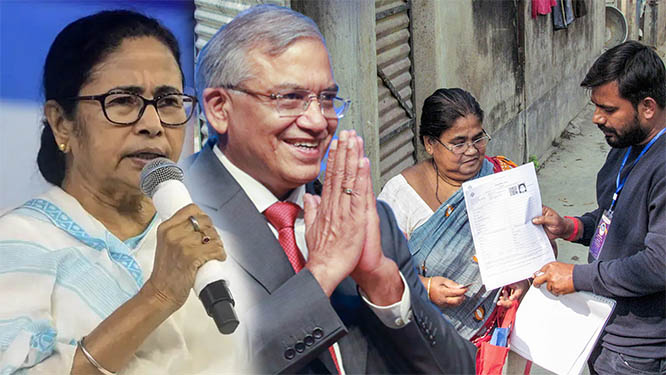New Delhi, Mar 12: 'Gomaata' became a hot political topic again after Narendra Modi assumed power in 2014 but it was the same 48 years ago too when 'Cow and Calf' symbol was allotted to Indira Gandhi-led Congress faction, just a couple of months before the 1971 General Elections.

Cries of hurting religious sentiments were raised soon after the symbol was allotted and it had prompted then Chief Election Commissioner S P Sen Varma later to record in an official account on the elections that it was “difficult to accept the view that cow represents Hindu religion”.
The argument given by those opposing the allocation of the symbol to Indira faction, including her opponents former Karnataka Chief Minister S Nijalingappa and K Kamaraj, was that "Gomaata is an object of religious worship" and it “should not be brought” into politics.







“The cow may be and should be the object of our extreme care and for that reason if one may like to say, even our reverence...Even those who call cow 'Gomata' will, I think, feel insulted if they are addressed as 'sons of the cow' “Gai Ke bachhe” instead of as sons of the immortal Amritasya Putrah," Sen-Varma wrote in his analysis.
He was of the view that it was difficult to regard the symbol 'calf and cow' as a religious symbol to the exclusion of any other symbol from the standpoint of principle and philosophy.
Sen-Varma then went on to say, "if 'calf and cow' is to be regarded as a religious symbol, the 'Banyan Tree' reserved for the SSP (Samyukta Socialist Party) at that time or the 'Rising Sun' reserved for the DMK, or the 'Star' reserved for the Swatantra Party and the 'Lamp' (Deepak) reserved for the Bharatiya Jana Sangh should all be regarded as religious symbols," he said.
"Even the 'Elephant' or the 'Lion' should be regarded as such. As has been pointed out, in that case no symbol, i.e., no pictorial representation of anything, can at all be used in elections," he said in the 'Report on the 5th General Elections in India 1971-72'.
It all started after Jagjivan Ram, the Indira faction's leader, objected to Nijalingappa's choice of 'Charkha' as their Congress (O)'s symbol, saying it should not be granted as it was “part and parcel of our (Indira faction) party flag”.
The Election Commission then allotted Nijalingappa's second choice 'Charkha being piled by a woman' while it decided to give Indira faction its second preference 'Calf and Cow' and not its first preference 'Child', as it felt that “justice demanded that”.
However, the allocation to Indira faction was objected by Nijalingappa on 27 January 1971, two days after the Election Commission order besides Bharatiya Kranti Dal, Jan Sangh and Swatantra Party. C Rajagopalachari and Kamaraj too objected to it.
Homidaji of Madhya Pradesh Communist Party also objected, saying cow symbol was semi-religious.
Dr A Natarajan of Madras, however, sent a telegram strongly criticising the views of Rajagopalachari and Kamaraj, claiming that the objection raised by them was equally applicable to the symbols 'Rising Sun', 'Lamp', and 'Star'.
When the Election Commission sought his comment, Jagjivan Ram wrote back saying it was "absolutely wrong" to suggest that the symbol has religious associations.
"As a matter of fact, the concept signifies the progress, health of the nation and prosperity in a country where 80% population depends on the rural economy for their prosperity. The parties in reference have objected to the symbol malafide only in order to create confusion," he said.
"Many amongst the recognised symbols find mention in one or other religious books but they have not been treated as religious symbols. The case of 'Calf and Cow' stands on a different footing altogether. The said symbol is nowhere treated as a religious symbol by any religious books or Shastras," he added.








Comments
Add new comment